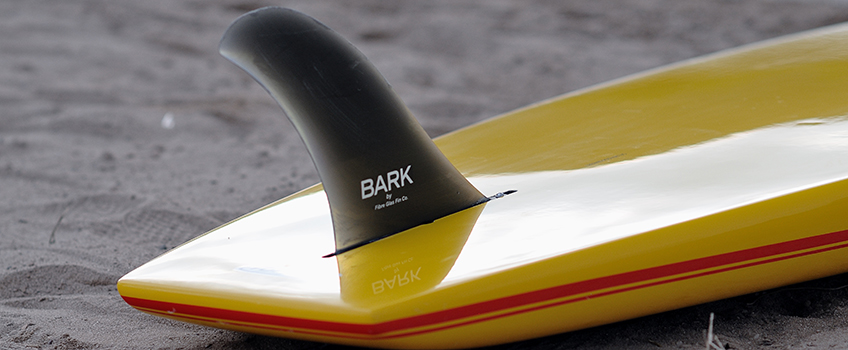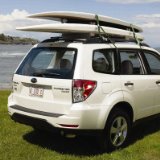Before reading this, check out Part 1 in the series first: A Beginner’s Guide to Stand Up Paddle Boarding – Part 1: How to Choose the Right Board. Then come back. Don’t worry, I’ll wait.
Done? Ok, lets start into what else you’ll need when beginning to SUP!
In most cases, buying a board and a paddle are really all you need to enjoy the experience of ‘walking on water’, but there are a few other things you should consider at the beginning.
Life jackets
Even if you’re the best swimmer around, a life jacket is essential if you’re planning to paddle out away from shore. You never know what could happen in deep water, and a life jacket could save your life.
In some areas, its also illegal to be paddleboarding beyond the surf without a life jacket.
A good SUP lifevest isn’t one of those old bulky ones that restrict movement. There are a number of styles that are made for paddling, and are comfortable to wear.
There are also inflatable ‘belt pack life jackets’, like the “Onyx M-24 Manual Inflatable Belt Pack Life Jacket, Black” that just strap around your waist and the majority of it sits behind your back, so its fully out of the way. These are getting very popular with paddleboarders as they don’t restrict movement (and allow a good tan!).
Or if you feel like you need the full jacket (or you want your kids to wear them), there are great paddling jackets made for SUPs that allow great freedom of motion while keeping you or your loved ones fully safe.
SUP Carrier
Getting your board to the water is easy if you’re right beside the water, but what if you’re walking a distance to get there? Most boards are light enough to carry with one hand, but if you’re struggling, a carrier is your best option.
There are a few different types of carriers, from simple woven straps that let you hang the board on your shoulder (Big Board SUP Carrier), freeing up your hands, to fully wheeled carriers, to bicycle attachments to home-made rigs.
The shoulder strap method may be the easiest if you can carry it. It is by far the smallest accessory, and could just wrap up into a bag strapped to the board while you’re paddling away.
The wheeled carrier is great if the board is just too heavy for you to shoulder, or if you need to walk a distance. The downside is that if you have to go on rough terrain, or up a lot of hills, this may not work for you. It also needs to be stored while you are on the water, so a suggestion is to keep a bike lock with it and lock it to a post or tree while you’re on the water.
There are a couple different styles of bike carriers available. The first is to use the wheeled carrier and strap the other end of the board to the back of your bike. This can be done simply. Or you can take it one level up and fully build a rack for your bike, as shown here: http://whatabikecando.com/sup-board-bike/. Some mechanical skills are required for that DIY project!
The best style of carrier is up to you, but just keep in mind a few things: distance to the water, where you’ll store the carrier (wheeled carriers can’t really be strapped to the board easily), and your overall comfortableness. Or if you want to just go with the basics, carry the board on its own, using the hand hole already built into 95% of boards!
Car Rack
Getting your board to the water from a distance is the next consideration while buying a board. If you live close to the water (within walking distance) then all you really need is a basic carrier, if at all. In the previous section, we went through a few types of carriers available.
If you’re a driving distance away from water, or you just want to take your paddleboard to a new location, a car rack is almost essential. Sure, you could just toss the board onto a couple towels or pool noodles on the roof of your car, and strap it down the best you can (trust me, I’ve done just that), but to go any distance without the worry of the board sliding off the car, or coming off the padding and scratching your car, a good car rack is needed.
Car racks can be simple, with just some padded cross bars that attach to your existing factory-standard roof racks, and some straps. This is great if you just have one board to carry, and your car already has the bars that go down both sides of the roof. This can cost from $60-$200 or so.
If you’re adding a whole new roof rack system, you’re looking at an additional price of $200 or so to install a base rack system, or you can go with the simple padded surf rack (Block Surf Single Wrap Surfboard Rack) that straps to the roof through the doorways and is removable.
Or if you’re the family adventurer type, there are dual roof rack systems, allowing you to stack two boards onto each other.
With all of these options, you can either go full out, or take your time and get things when needed. The life jackets are probably your first purchase if you don’t already own any, just in terms of safety. I’ve gone 2 years without needing a carrier or car rack (though the water is only a 3 minute walk for me), and will probably just keep on carrying my SUP the old fashioned way.
Up next:
A Beginner’s Guide to Stand Up Paddle Boarding – Part 3: Getting on the Board
A Beginner’s Guide to Stand Up Paddle Boarding – Part 4: Paddling Techniques




Leave a Reply